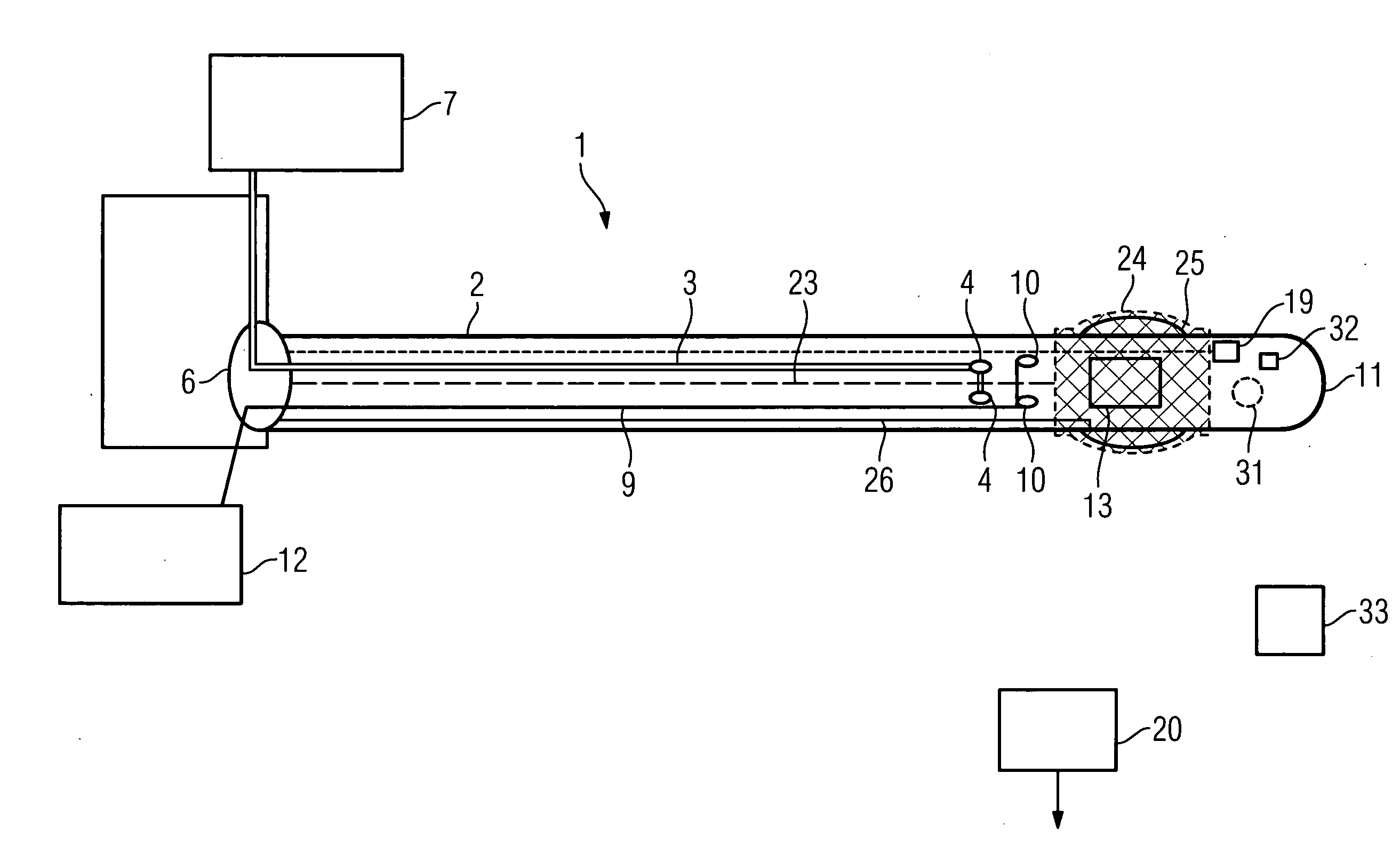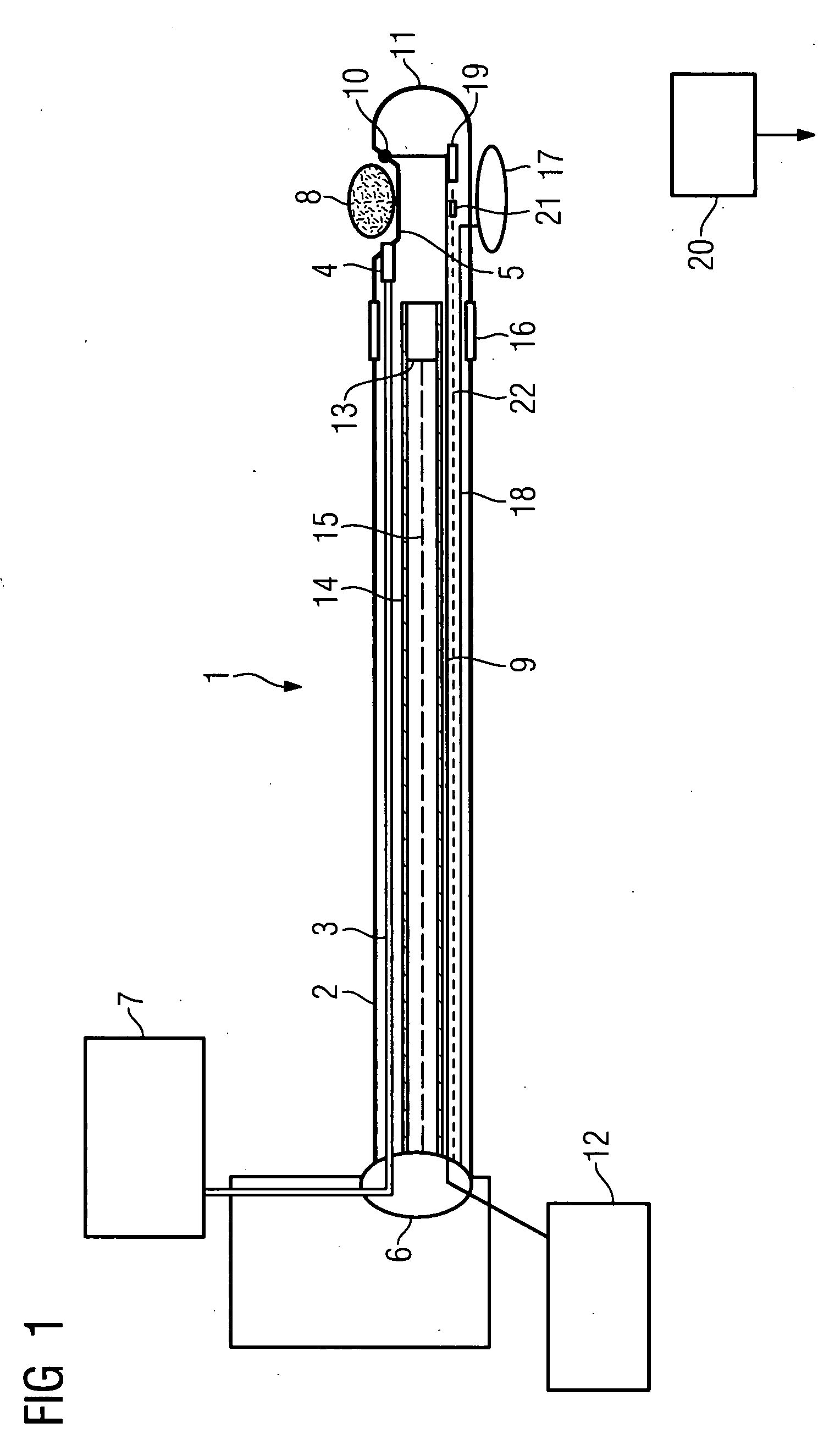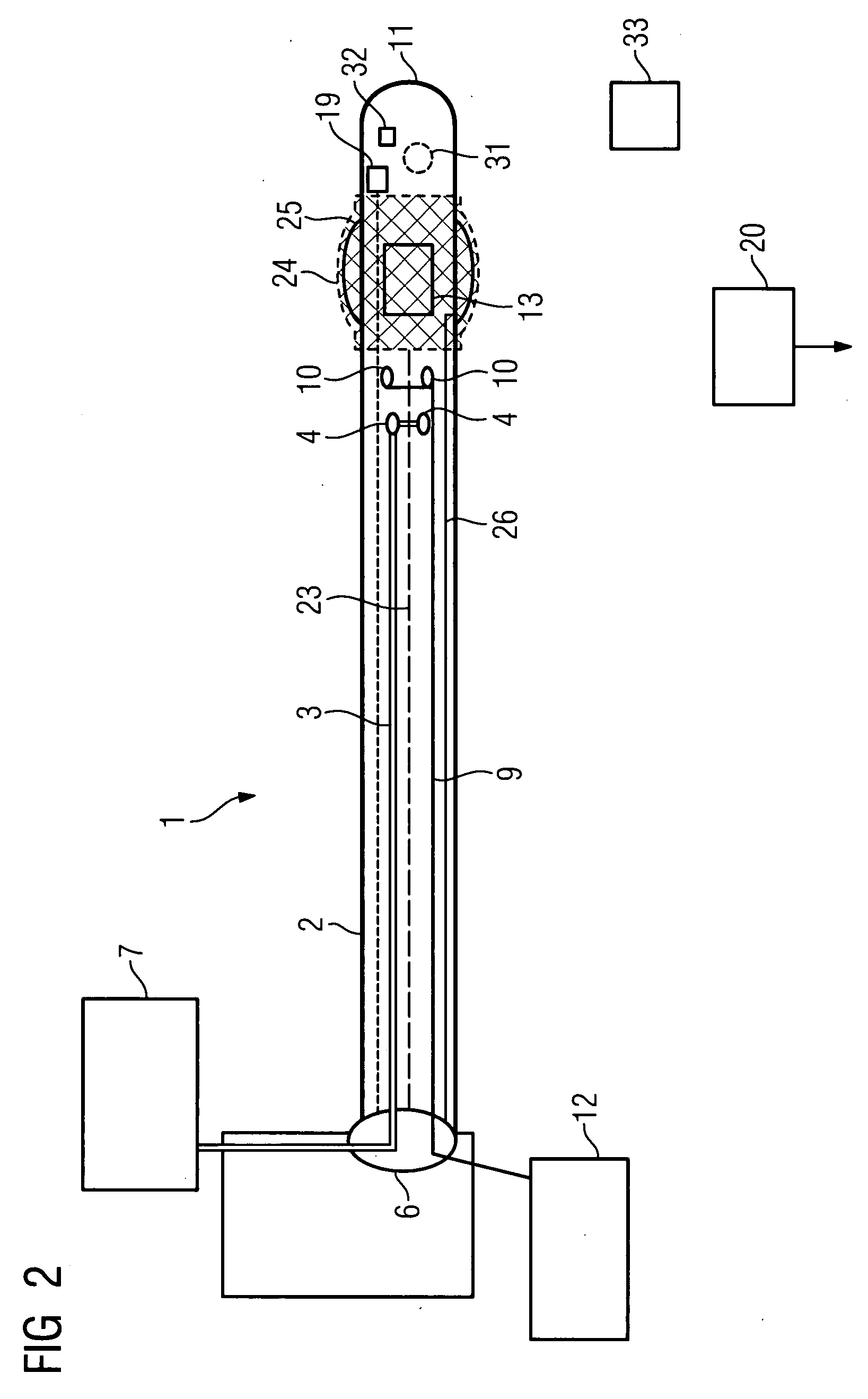Catheter for removing tissue from a hollow organ
a hollow organ and catheter technology, applied in the field of catheters for removing tissue from hollow organs, can solve the problems of reducing the resting rate, occlusion (blockage) of coronary arteries, and so as to achieve the effect of reducing the frictional resistan
- Summary
- Abstract
- Description
- Claims
- Application Information
AI Technical Summary
Benefits of technology
Problems solved by technology
Method used
Image
Examples
Embodiment Construction
[0028]FIG. 1 shows a basic diagram of an inventive catheter 1, comprising a catheter shell 2, in which a first lumen 3 is provided, via which a fluid can be supplied to a nozzle-type outlet opening 4 which ends in an opening 5. From there the fluid, which is fed under pressure from a pump device 7 with fluid container which is connected by a releasable connection to the catheter at a corresponding coupling interface 6 is sprayed onto and external surrounding hollow organ on which in the example shown there is a thrombus 8. Via this the thrombus 8 or the tissue respectively is removed. Furthermore a second lumen 9 is provided, ending in an inlet opening 10 in the area of the catheter tip 11, and also releasably connected on the other side via the coupling interface 6 to a vacuum pump 12 along with storage container. Tissue removed is immediately sucked out again via this inlet opening 10 and the lumen 9, thus not remaining within the vessel.
[0029]Also provided in the example shown is...
PUM
 Login to View More
Login to View More Abstract
Description
Claims
Application Information
 Login to View More
Login to View More - R&D
- Intellectual Property
- Life Sciences
- Materials
- Tech Scout
- Unparalleled Data Quality
- Higher Quality Content
- 60% Fewer Hallucinations
Browse by: Latest US Patents, China's latest patents, Technical Efficacy Thesaurus, Application Domain, Technology Topic, Popular Technical Reports.
© 2025 PatSnap. All rights reserved.Legal|Privacy policy|Modern Slavery Act Transparency Statement|Sitemap|About US| Contact US: help@patsnap.com



